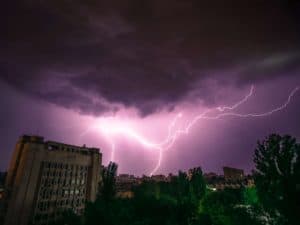
A power surge can be explained as a sudden boost in the electrical charge in the power lines. This increases the electrical potential energy which in turn increase the electric current flowing through your outlets. The results are dangerous and can lead to burning out sensitive electronics or damaging them completely.
Sometimes a power surge may appear harmless. All you might notice is a quick outage, but this seemingly inconsequential outage can be dangerous.
What causes power surges?
Most power surges start from outside the home and lightning strikes are the most common culprit. Power surges caused by the weather or lightning are thus called storm surges. Other causes of a power surge include:
- Tripped circuit breaker
- Short circuit
- Power outage
- Inductive spikes
- Malfunctions from the utility company
- Use of high-powered electrical devices such as refrigerator, air conditioners, and elevators.
How to prevent power surges
Carry out an inspection
Faulty wiring can easily lead to power surges whether or not a storm is involved. To avoid such situations, it is best to call an electrician for inspection before any weather disturbances start. This is most important for older homes too.
Unplug electronics during a storm
Unplugging your electrical appliances may seem old fashioned but it is a sure way to avoid any complications. Regardless of if you have surge protectors installed or not, unplug the appliance if they have no critical use. Sometimes, leaving the electronics on plug may not immediately affect them even during a storm, but the damage can pile up and lead to costly repairs in the long run.
Employ the use of surge protectors
Surge protector devices usually include power strips, surge protection outlets, and more. They are often described as point-of-use surge protectors. These devices offer some sort of protection but should not become your only source of protection for a storm surge. They are better at protecting sensitive equipment from minor surges.
Whole house surge protection
A whole-house surge protector is the strongest residential surge protection you can get. It acts as a buffer to absorb electricity during a storm surge. Hence it protects the entire electrical system from harm. Whole house surge protectors are installed at the main power line or primary breaker box between your home electrical system and the grid. When you use this type of protection, you can have peace of mind and not have to unplug your devices when in use.
A whole-house surge protector must be installed by a qualified and certified electrician. Reach out to us at Elcon Electric to equip your home with protection from storm surges and other electrical hazards.

